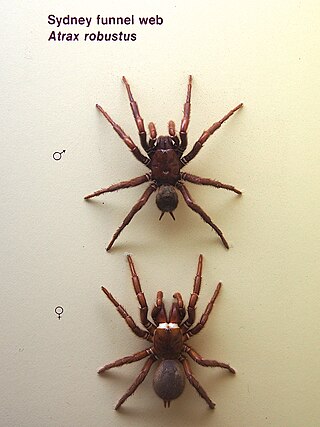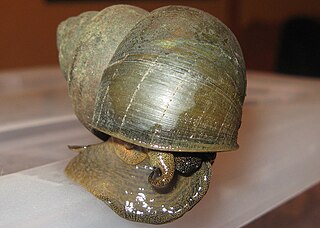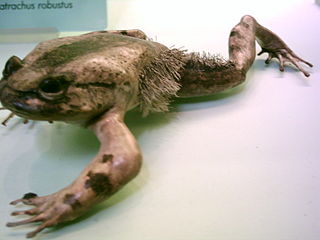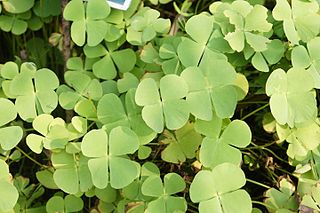
Ferrari S.p.A. is an Italian luxury sports car manufacturer based in Maranello, Italy. Founded in 1939 by Enzo Ferrari (1898–1988), the company built its first car, a sports racing car, in 1940. It adopted its current name in 1945, and began to produce its current line of road cars in 1947. Ferrari became a public company in 1960, and from 1963 to 2014 it was a subsidiary of Fiat S.p.A. It was spun off from Fiat's successor entity, Fiat Chrysler Automobiles, in 2016.

The gray whale, also known as the grey whale, gray back whale, Pacific gray whale, Korean gray whale, or California gray whale, is a baleen whale that migrates between feeding and breeding grounds yearly. It reaches a length of 14.9 meters (49 ft), a weight of up to 41 tonnes (90,000 lb) and lives between 55 and 70 years, although one female was estimated to be 75–80 years of age. The common name of the whale comes from the gray patches and white mottling on its dark skin. Gray whales were once called devil fish because of their fighting behavior when hunted. The gray whale is the sole living species in the genus Eschrichtius. It is the sole living genus in the family Eschrichtiidae, however some recent studies classify it as a member of the family Balaenopteridae. This mammal is descended from filter-feeding whales that appeared during the Neogene.

Moa are an extinct group of flightless birds formerly endemic to New Zealand. During the Late Pleistocene-Holocene, there were nine species. The two largest species, Dinornis robustus and Dinornis novaezelandiae, reached about 3.6 metres (12 ft) in height with neck outstretched, and weighed about 230 kilograms (510 lb) while the smallest, the bush moa, was around the size of a turkey. Estimates of the moa population when Polynesians settled New Zealand circa 1300 vary between 58,000 and approximately 2.5 million.

Pinus densiflora, also called the Japanese red pine, the Japanese pine, or Korean red pine, is a species of pine tree native to East Asia. In China it is known as 赤松.

Flammulina filiformis is a species of agaric in the family Physalacriaceae. It is widely cultivated in East Asia, and well known for its role in Japanese and Chinese cuisine. Until recently, the species was considered to be conspecific with the European Flammulina velutipes, but DNA sequencing has shown that the two are distinct.

The long-tailed vole, in some areas known as the San Bernardino long-tailed vole, is a small vole found in western North America. They have short ears and a long tail. Their fur is gray brown with light gray underparts. They are around 18 cm (7.1 in) long with an 8 cm (3.1 in) tail and weigh about 50 g (1.8 oz).

The Sydney funnel-web spider is a species of venomous mygalomorph spider native to eastern Australia, usually found within a 100 km (62 mi) radius of Sydney. It is a member of a group of spiders known as Australian funnel-web spiders. Its bite is capable of causing serious illness or death in humans if left untreated.
The Chinese sturgeon is a critically endangered member of the family Acipenseridae in the order Acipenseriformes. Historically, this anadromous fish was found in China, Japan, and the Korean Peninsula, but it has been extirpated from most regions due to habitat loss and overfishing.

The black wallaroo, also known as Woodward's wallaroo, is a species of macropod restricted to a small, mountainous area in Arnhem Land, Northern Territory, Australia, between South Alligator River and Nabarlek. It classified as near threatened, mostly due to its limited distribution. A large proportion of the range is protected by Kakadu National Park.

The common wallaroo, also known as the euro, hill wallaroo, or simply wallaroo, is a species of macropod. The word euro is particularly applied to one subspecies.

Parapsicephalus is a genus of long-tailed rhamphorhynchid pterosaurs from the Lower Jurassic Whitby, Yorkshire, England. It contains a single species, P. purdoni, named initially as a species of the related rhamphorhynchid Scaphognathus in 1888 but moved to its own genus in 1919 on account of a unique combination of characteristics. In particular, the top surface of the skull of Parapsicephalus is convex, which is otherwise only seen in dimorphodontians. This has been the basis of its referral to the Dimorphodontia by some researchers, but it is generally agreed upon that Parapsicephalus probably represents a rhamphorhynchid. Within the Rhamphorhynchidae, Parapsicephalus has been synonymized with the roughly contemporary Dorygnathus; this, however, is not likely given the many differences between the two taxa, including the aforementioned convex top surface of the skull. Parapsicephalus has been tentatively referred to the Rhamphorhynchinae subgrouping of rhamphorhynchids, but it may represent a basal member of the group instead.

The Chinese mystery snail, black snail, or trapdoor snail, is a large freshwater snail with gills and an operculum, an aquatic gastropod mollusk in the family Viviparidae. The Japanese variety of this species is black and usually a dark green, moss-like alga covers the shell.

The hairy frog also known as the horror frog or Wolverine frog, is a Central African species of frog in the family Arthroleptidae. It is typically considered monotypic within the genus Trichobatrachus, but based on genetic it should be included in Astylosternus instead. Its common name refers to the somewhat hair-like structures on the body and thighs of the breeding male.

The Scott Act was a United States law that prohibited U.S. resident Chinese laborers from returning to the United States. Its main author was William Lawrence Scott of Pennsylvania, and it was signed into law by U.S. President Grover Cleveland on October 1, 1888. It was introduced to expand upon the Chinese Exclusion Act passed in 1882 and left an estimated 20,000-30,000 Chinese outside the United States at the time of its passage stranded, with no option to return to their U.S. residence.

Parastylotermes is an extinct genus of termite in the Isoptera family Stylotermitidae known from North America, Europe, and India. The genus contains five described species, Parastylotermes calico, Parastylotermes frazieri, Parastylotermes krishnai, Parastylotermes robustus, and Parastylotermes washingtonensis.

Oplismenus undulatifolius, commonly known as wavyleaf basketgrass, is a species of perennial grass from the family Poaceae that is native to Eurasia, specifically Southern Europe through Southern Asia. Due to its invasive nature, it can be found in countries such as Pakistan, China, Japan, Korea, India, Australia, South Africa, and has since been introduced to the Mid-Atlantic United States. There are no recognized subspecies in Catalogue of Life.

Laccotrephes is a genus of water scorpion belonging to the family Nepidae. They are carnivorous insects that hunt near the water surface. They are not aggressive, but may inflict a painful bite if not handled carefully, which may cause a local reaction. There are about 60 species found in shallow stagnant or slow-moving waters in warm parts of Africa, Asia and Australia.
Chae Chan Ping v. United States, 130 U.S. 581 (1889), better known as the Chinese Exclusion Case, was a case decided by the US Supreme Court on May 13, 1889, that challenged the Scott Act of 1888, an addendum to the Chinese Exclusion Act of 1882.

Marsilea minuta, or dwarf waterclover is a species of aquatic fern in the family Marsileaceae. It is not to be confused with Marsilea minutaE.Fourn. 1880, which is a synonym for Marsilea vestita. Other common names include gelid waterklawer, small water clover, airy pepperwort, and pepperwort, though the lattermost also applies to plants in the genus Lepidium. In French it is called marsilea à quatre feuilles and petite marsilée, the latter appearing to be a calque with the Latin botanical name. In Chinese it is 南国田字草, literally "southern field word grass," referencing the similarity of the leaflet shape to the Chinese character for "field." The Koch Rajbongshi people and Garo people call it shusni shak. It is called 'শুশনি শাক' in Bengali. In parts of India it can be called sunisanakka In Indonesian it is semanggi, but this name also applies to Marsilea crenata. In Japanese it is nangokudenjiso and in Thai it is phakwaen. In Malaysian it is tapak itik. In the Philippines it is kaya-kayapuan.

Microrestes robustus is a stick insect species native to northwestern Vietnam.


















